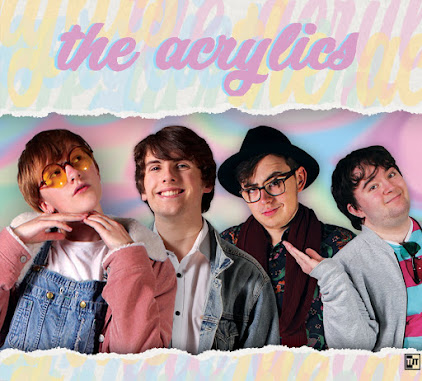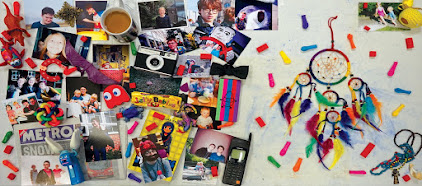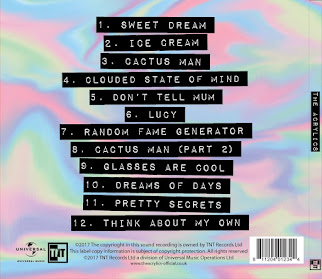My Contributions
I personally worked well. I assumed every role of production at some point and carried them out effectively- for example, I acted, directed, operated the camera, did the lighting, set up and packed away the studio, did behind-the-scenes work, and much more.
My solo contributions include lighting, directing, and filming every shot that focused on or only included Jack and Noa, as well as all of Tom's solo shots. I acted in every scene in which Guy Chapman was present, as I played the part of that character, which includes every band shot and all of the 'Mortal Kombat' shots, as well as the pillow fight and party scenes. I ensured I had the track on my phone at all times and often was the one who linked up my mobile to the sound desk in order to play the song so that we could lip-sync or perform to it. I personally took charge of directing the trichromy shots as I had the best understanding of how to get the optimal footage to merge and create effect in the editing stage, having also been the one who came up with the idea for these shots too. I of course also did a fair share of the standard studio work, on top of my specific contributions, some of which are mentioned here.
Our Challenges
Our group faced a fair few challenges unique to ourselves, outside of the general challenge of shooting a music video without much help in a short span of time, which all three groups faced.
The first one was when we had to immediately transition from the test shoot on Friday 3rd November into the first day, and one of the busiest days, of the main shoot on Saturday the 4th. This day was when we almost exclusively filmed the party scene footage, which necessitated organising not just ourselves but also the large group of extras required. We had to teach all of them everything we had learned and planned over the course of the project in a concise manner- this included studio health and safety, what they had to do in the video, and much more. Then of course we had to manage them throughout the day, not just in terms of directing them as actors and so on, but also in terms of keeping them happy as people willing to help us out. We overcame this challenge very well, as we confirmed with some of the actors later while we were collecting audience feedback (the actors are part of our target audience) that they left very happy with the unique experience despite the fairly long working day, and we got all the footage we needed.
Another challenge we faced, possibly our largest one, was that a whole morning of footage was corrupted at some point. We planned for this to some degree- on Thursday, we had scheduled a check of our footage, and it was this check which revealed to us that most of Tuesdays footage was corrupted on all of the places it was stored, meaning we had no back-up. We thus had to figure out how to re-shoot a large portion of both the 'Alice in Wonderland' and 'Singing in the Rain' footage, but luckily we had planned back-ups on Friday evening and on Saturday, which we re-planned our shoot schedule around when we found out what had happened. We also collaborated with the media technician, and decided with him that we should have an extra back-up- he thus took our footage and stored it on his computer in the media department on top of the multiple studio back-ups. We never encountered this problem again, and the other two groups who both shot after us also took advantage of this extra back-up.
We also faced various smaller challenges throughout the shoot. One of these included when we had to make the decision on what to do with the cyclorama- the seam between the wall and the floor was visible on camera. We originally planned to keep it visible on account of our DIY homemade aesthetic, but we also wanted to try and eliminate it to see how it would look without a seam on the advice of the media staff. We wanted to explore all routes and did not want to disappoint the staff, so we tried various ways of covering up the seam, including taping paper all along it. This took up a lot of time, which meant we had to be even more efficient with the following shots and even reschedule some. Ultimately we decided we liked it how it was originally, but it was a useful experience in terms of experimenting in the studio and solidifying ideas while shooting, and we managed to both test every possible configuration and ensure we were making the correct decision to produce the best-looking footage, while also not impacting on the amount of shots we could get.
Audience Feedback
We made changes to our shoot throughout, adapting to different situations as well as audience feedback- we got the party scene actors to look at our ideas, as well as some of the non-party shots we filmed that day, to get their feedback, as they are part of our target audience. They suggested we make the lighting for the band shots more pink, so we did. We also got Tom's feedback throughout the week, as he was constantly present due to being an actor, but not part of the planning process- thus, as a target audience member outside of the main group, he was able to guide us, suggesting improvements and choreography for his shots (such as the movements during the 'Sergeant Pepper' set-up he was part of) as well as other areas, such as his idea to improve the handheld shots by standing still and trying to be more stable rather than moving around so much and letting the camera shake get out of hand.
Audience Feedback
We made changes to our shoot throughout, adapting to different situations as well as audience feedback- we got the party scene actors to look at our ideas, as well as some of the non-party shots we filmed that day, to get their feedback, as they are part of our target audience. They suggested we make the lighting for the band shots more pink, so we did. We also got Tom's feedback throughout the week, as he was constantly present due to being an actor, but not part of the planning process- thus, as a target audience member outside of the main group, he was able to guide us, suggesting improvements and choreography for his shots (such as the movements during the 'Sergeant Pepper' set-up he was part of) as well as other areas, such as his idea to improve the handheld shots by standing still and trying to be more stable rather than moving around so much and letting the camera shake get out of hand.
Our Progress
I think, overall, we made very good progress during this week. While we only focused on the filming part of production, we also got every bit of footage we might ever need for the project. We faced various challenges, but combatted them effectively within the very limited timeframe we had for the shoot.
We managed to develop our ideas on top of the efficient work we were doing, and ultimately had a very successful shoot. Looking back, we could have done more variations on certain shots as part of the experimentation we did- we did various angles for the instrumentalists' solo shots, for example, but not many different angles for the singer outside of the handheld shots- and we could have improved on the 'Sergeant Pepper' lighting somewhat as it ended up being a little bit more similar to the 'Alice in Wonderland' lighting than originally intended, but these reflections only serve as another piece of experience we can carry into the rest of the project, and we still ended up with high-quality, varied, and interesting footage that was a huge boon during editing.
We managed to develop our ideas on top of the efficient work we were doing, and ultimately had a very successful shoot. Looking back, we could have done more variations on certain shots as part of the experimentation we did- we did various angles for the instrumentalists' solo shots, for example, but not many different angles for the singer outside of the handheld shots- and we could have improved on the 'Sergeant Pepper' lighting somewhat as it ended up being a little bit more similar to the 'Alice in Wonderland' lighting than originally intended, but these reflections only serve as another piece of experience we can carry into the rest of the project, and we still ended up with high-quality, varied, and interesting footage that was a huge boon during editing.











No comments:
Post a Comment